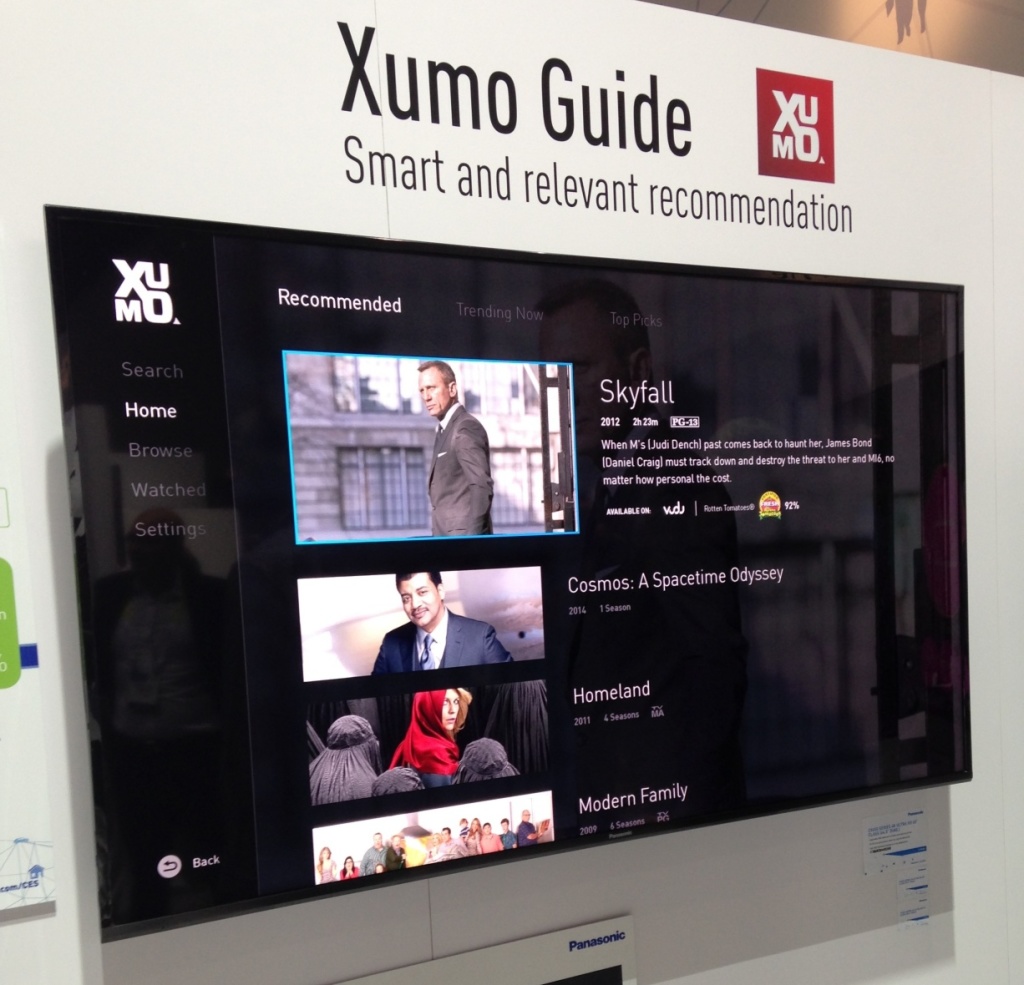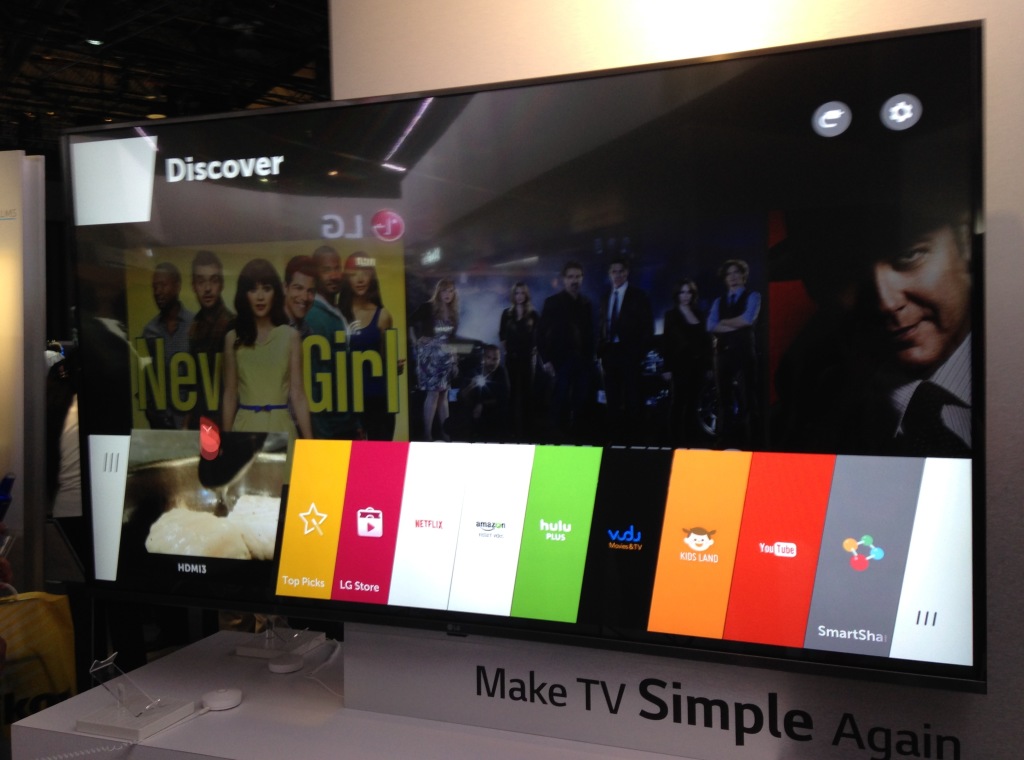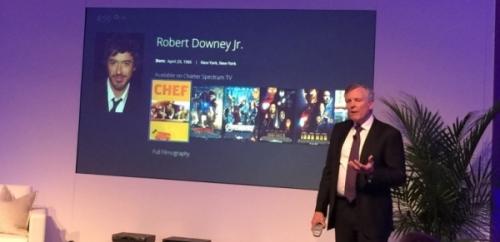For years, the promise of smart TVs has been touted at the annual Consumer Electronics Show. We’ve been promised a future of TVs that can integrate programming across all platforms, and manage linear programming and web streaming services seamlessly. A TV that will both be able to access the Internet with ease and make watching TV better. We don’t have that TV now. But if CES 2015 is any indicator, we’re getting much closer. A few stops on the show floor provide reason for optimism. At Panasonic, their usual collection of physical technology, everything from televisions to airline radars, is on display. But a special new software product is being featured as well. The Xumo guide is a new TV integrated program that organizes the myriad Internet video services into one seamless app. It searches Vudu, Hulu, Netflix, and a handful of others through one program with one remote on one user profile and displays it through one UI. It seems so obvious but it must have been an incredible challenge to integrate these disparate services.

At the always large and impressive LG exhibit, they’ve unveiled the second iteration of their TV webOS (bravely named web OS 2.0) now with the “My Channels” feature. The feature allows users to save their favorite channels – linear, live channels that used to be only accessible through the cable guide – on the Smart TV software and access them as easily as they access other web streaming applications. Again, it sounds so simple, but it’s actually an incredible leap.

And then there was the major announcement from Charter Communications and Cisco. Yesterday, Charter CEO Tom Rutledge presented Worldbox, a new set-top box that uses hybrid IP/QAM technology to deliver Spectrum, their new guide system. But the really big deal here is that Spectrum will also be available on non-traditional set-top boxes. For example, during the demo, a newer Roku device was a featured access point for Spectrum but so was an eleven-year-old Arris set-top box. In other words, thanks to a great TV/technology partnership, and a waiver of the FCC’s integration ban which is enabling the use of downloadable security, Cisco and Charter were able to create a cable experience that works (and looks) a whole lot more like a web experience and it will be able to work on a wide variety of video devices. New devices, new software and new partnerships show how the vision of smart TVs is finally turning into reality.
